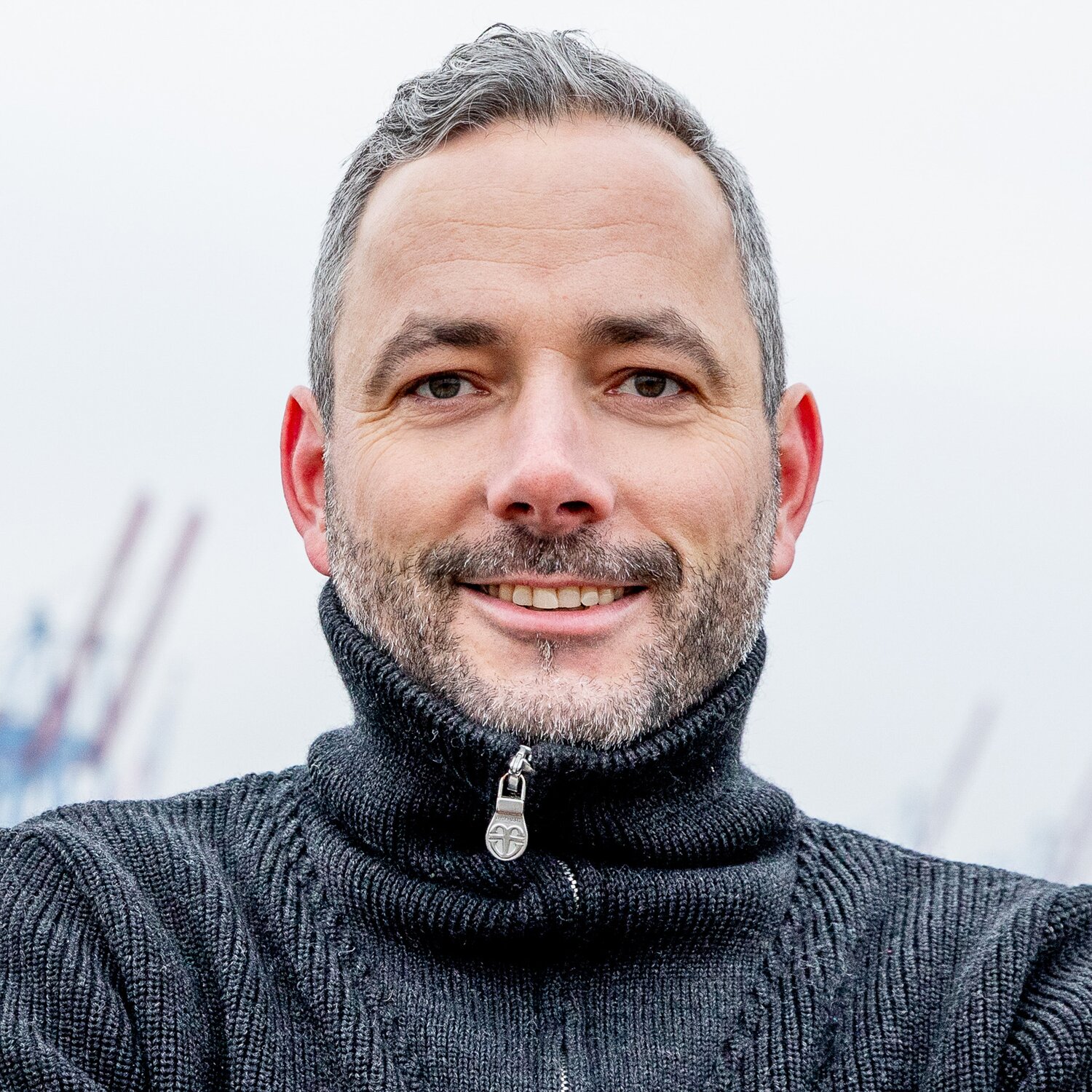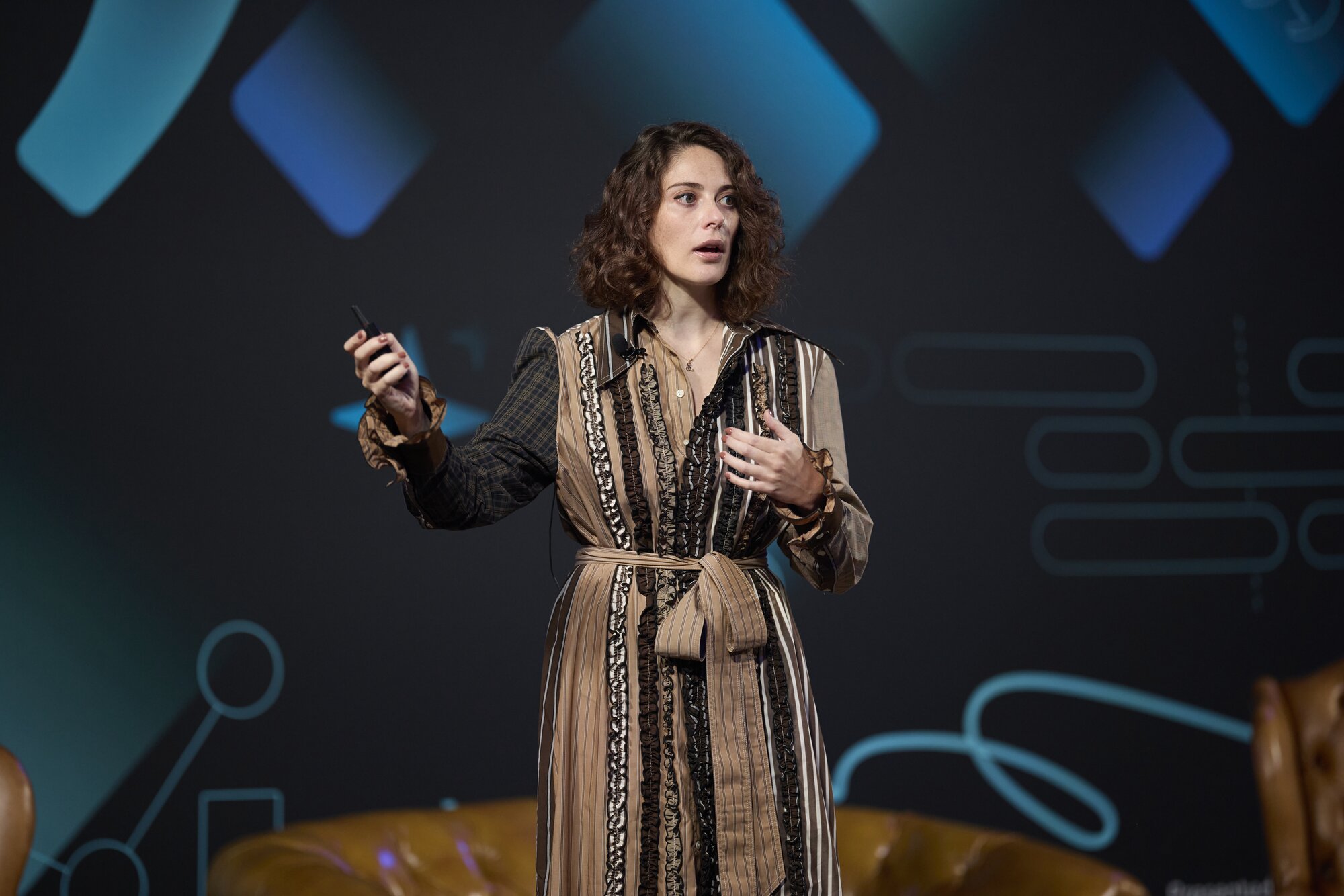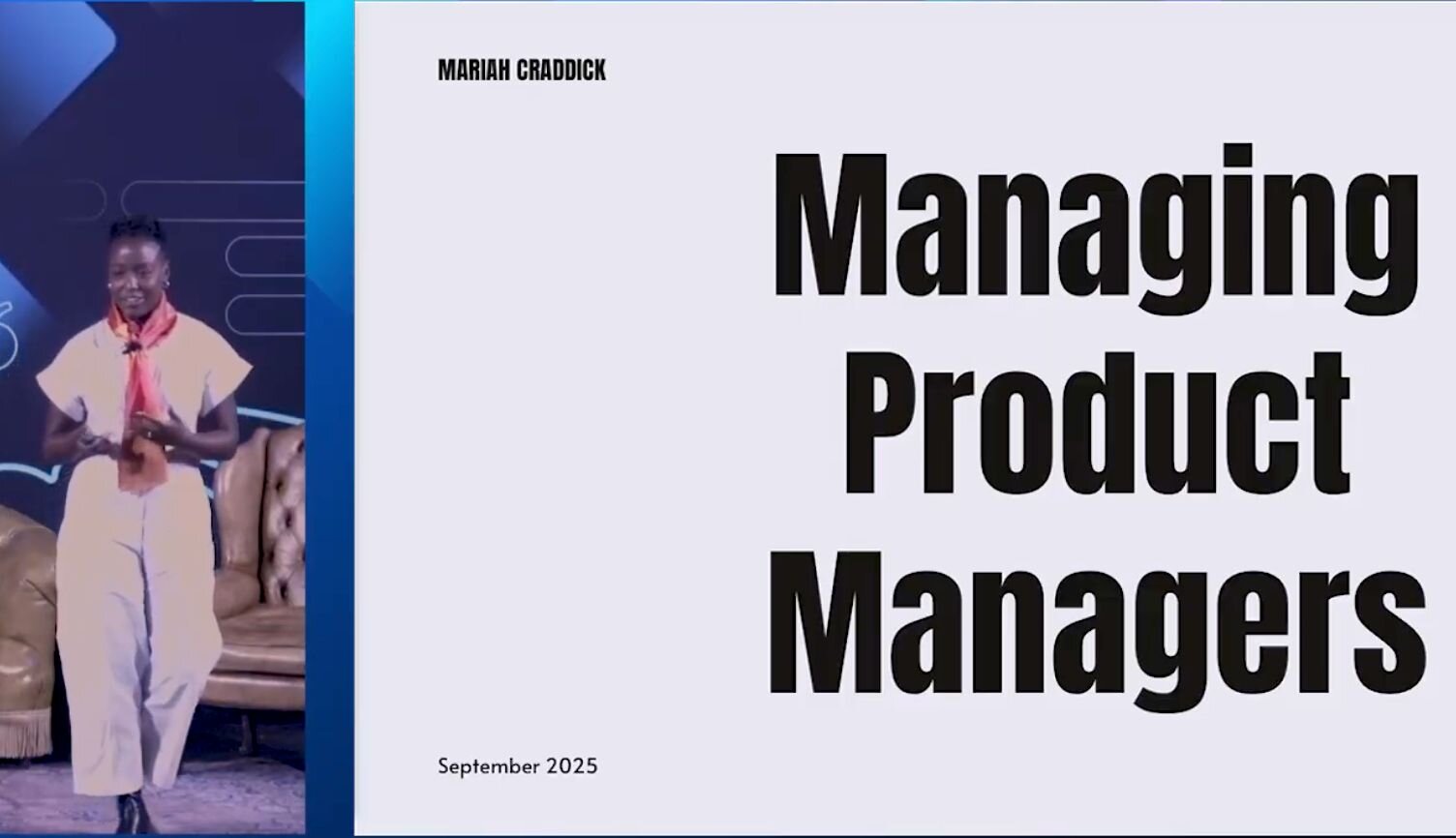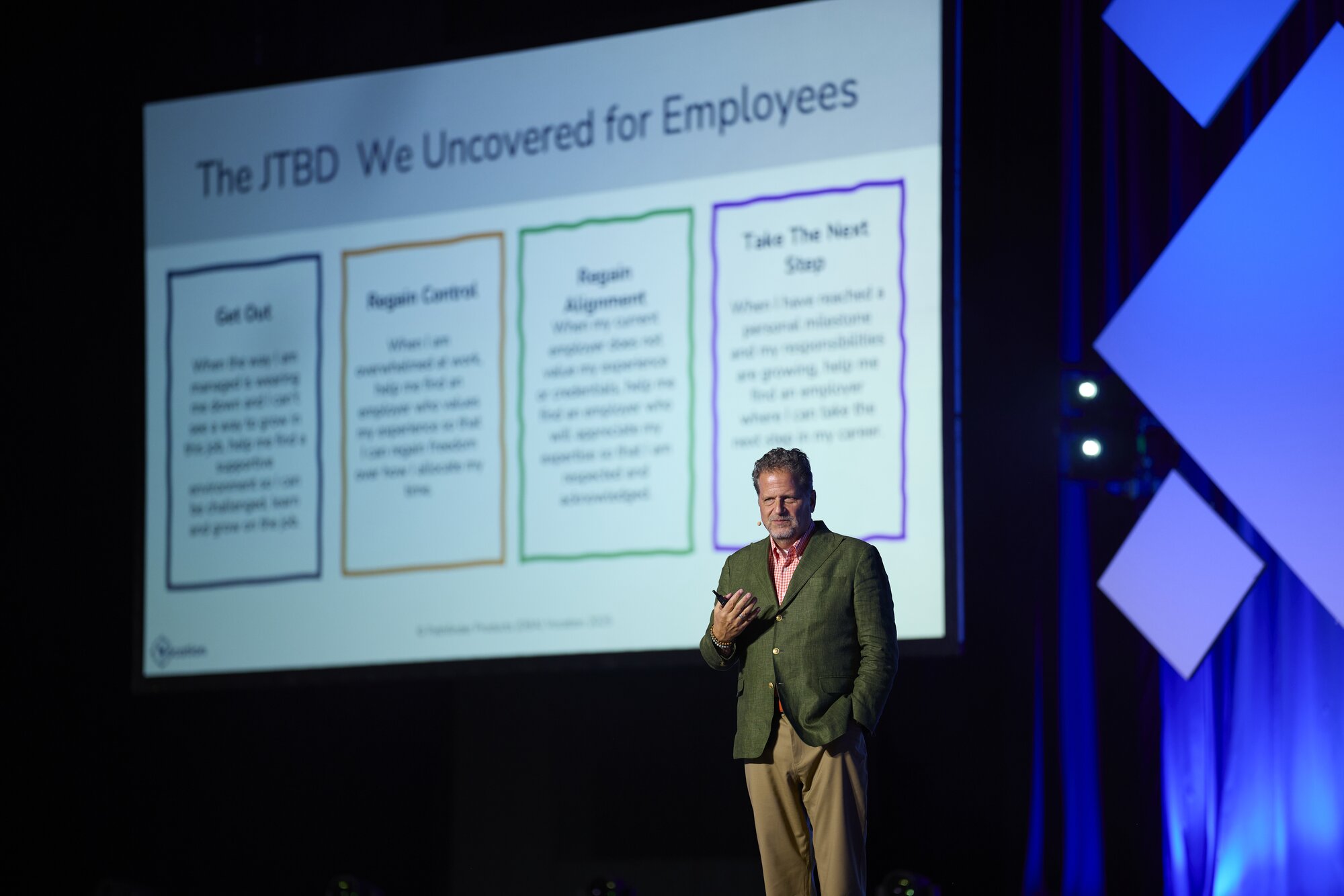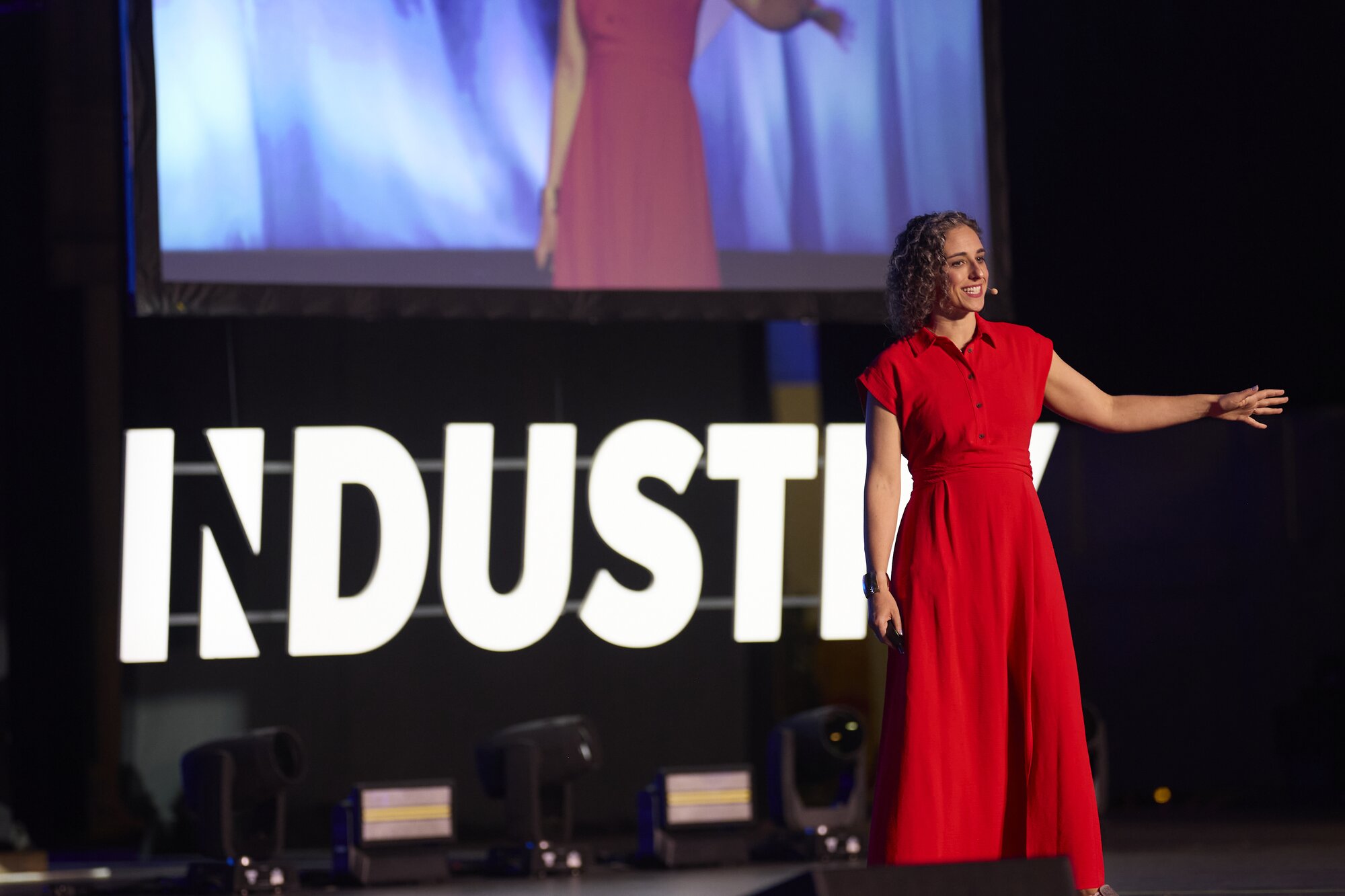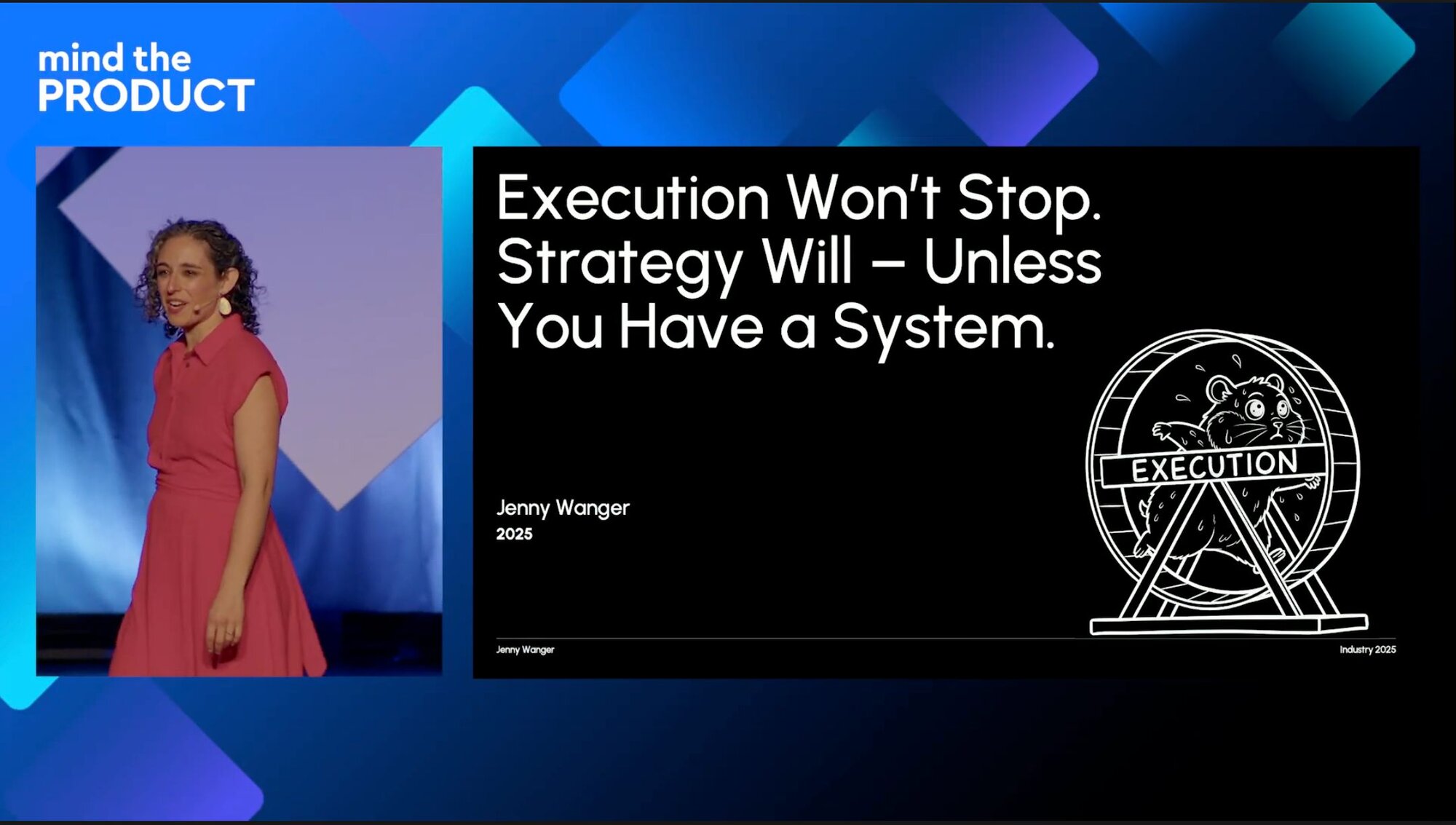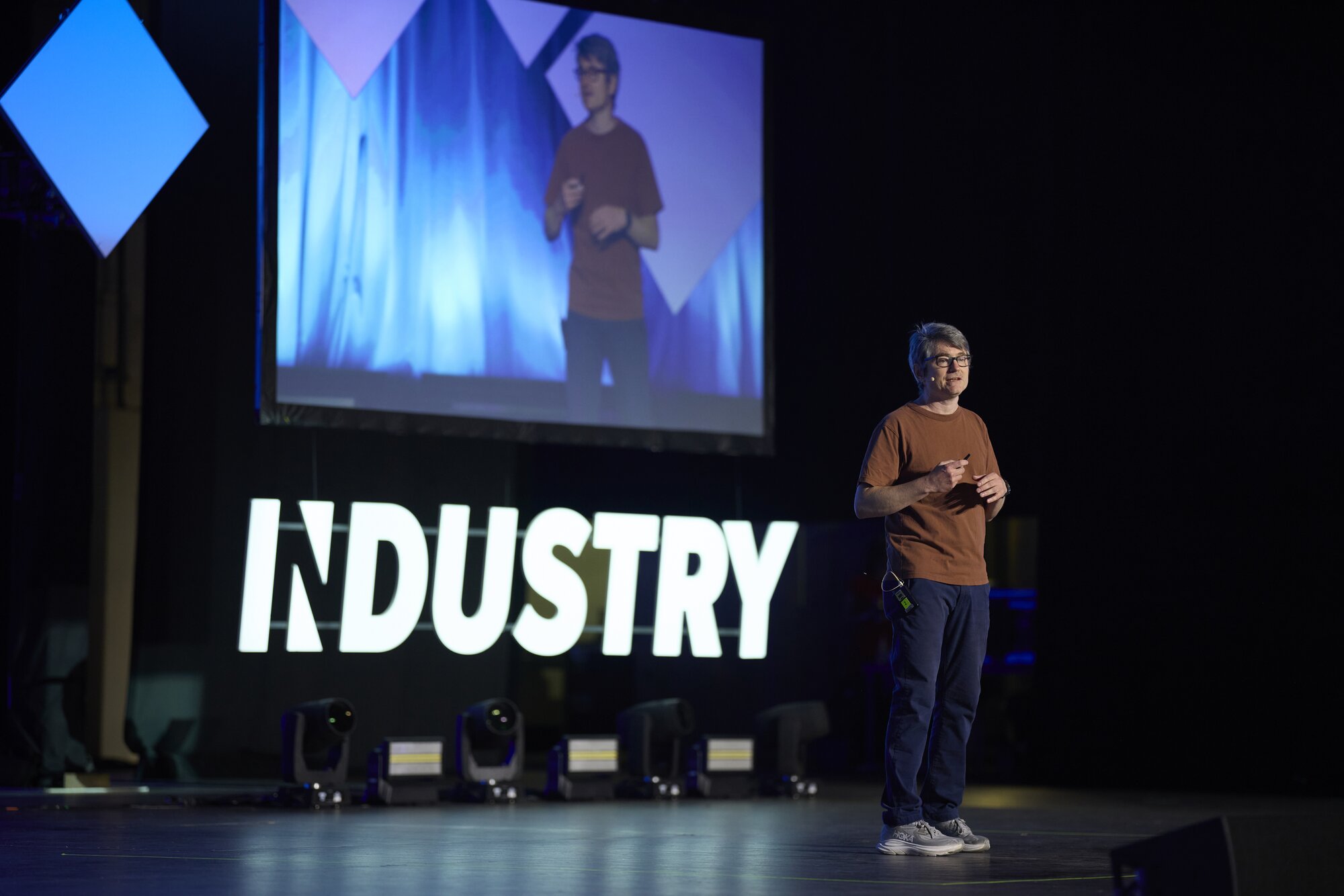This session On Being User Minded was one of the themed sessions during MTP Engage Hamburg 2022 (the others were On Being Responsible, On Giving Direction and On Being Human). Moderated by Product coach Shaun Russell, three high-profile speakers shared their perspectives on user-centricity:
- Aras Bilgen, design consultant, trainer and co-author of “Product Research Rules”
- Michele Hansen, co-founder of Geocodio, co-host of the “Software Social” podcast and author of “Deploy Empathy: A Practical Guide to Interviewing Customers.”
- Dr. Andy Polaine, service design & innovation consultant, founder of the “Doctor’s Note” newsletter and co-author of “Service Design”
Now, let’s take a closer look at their individual talks. To dive even deeper, it is highly recommended to watch the recordings:
- Jump straight to Michele's talk: Destroying every product person’s least favorite quote
- Jump straight to Andy's talk: Mind your product language
Aras Bilgen – When research hurts
In his talk, Aras aims to raise our awareness that in many organizations, research is employed in a very questionable way and misused as a political instrument. He starts off by sharing a personal story: In the early days of his career, he was a generalist who had to do basically everything on his own. But with growing teams, specialized roles were established in our industry. All of a sudden Aras found himself in situations where a user researcher would tell him what was wrong with his design. That made Aras feel stupid and it was the first time he’d experienced that user research can hurt.
Nowadays, movements like the 2018 “Research Ops” community aim to democratize research by evangelizing principles that enable everyone across the organization to do research properly. Ideally, this establishes three parties:
- A centralized research team is there to coach the rest of the organization.
- Decision-makers who know what research can do for them and are able to differentiate good from bad research.
- The people who want to do research, eg. the product teams, coached and upskilled by the centralized research team.
When done right, this is a great working model. But as Aras explains, these three parties oftentimes lack a shared research mindset, where the only reason to do research is to learn from both positive and negative insights. Instead, they might demonstrate a confirmatory mindset, a problem-finder mindset or a transactional mindset. Research can then be misused as the referee between conflicting parties, but that’s a role research cannot fill. Instead, research provides data that needs interpretation and therefore valuable discussions across all parties involved. As Aras puts it:
“If you don't have a common language to talk about research and no way to put the insights you gain into action, you're lost, and all efforts to turn research into a team capability fail.”
Aras summarizes that research hurts when…
- …we mistake valid feedback for a personal attack
- …we do it to exploit users
- …we seek to prove ourselves right
- …it builds nice-looking walls
- …it is used as an excuse to avoid discussion
Instead, research can help us thrive when…
- …it highlights the good as well as the bad
- …its primary aim is to learn from users
- …we courageously do it without our ego
- …it embraces everyone on the team
- …it is used to start candid conversations
Michele Hansen – Destroying every product person’s least favorite quote
Which product person hasn't despaired the famous Henry Ford quote, which is popularly used to discredit user research in general?
“If I had asked people what they wanted, they would have said faster horses.”
In her talk, Michele gives several reasons why this quote is problematic: First, Henry Ford never said this. The first time this quote appeared in print was in a letter to the editor in Marketing Week in 2001. But perhaps the most important problem with this quote is that Ford Motor Company actually lost the competition to GM because GM built cars that were tailored to the needs and wants of customers.
So why do people still like to use this quote, Michele wonders? From her observation, it’s because they want to express that customers' aren't a reliable source of inspiration. Which is in fact true, but only in some sense. Scott Burleson puts it like this in “The Statue in the Stone”:
- Customers are reliable sources about their own experiences
- They are not reliable sources about things they haven’t experienced
When confronted with the alleged Henry Ford quote, Michele recommends applying the same principles we would use when talking to users. As with Jobs-To-Be-Done, we might ask why people want to hire this quote, and then respond with empathy and curiosity to get to the core and truly understand. Only then can we address the pains, fears, and misconceptions that triggered the usage of the quote, and hopefully we can get our research critic to participate in our next interview and experience the power of research.
“If there is any one secret of success, it lies in the ability to get to the other person’s point of view and see things from that person’s angle as well as from your own.”
Michele concludes her presentation with this real quote from – yes! – Henry Ford.
Andy Polaine – Mind your product language
Andy quotes Abraham Joshua Heschel at the beginning of his talk on the importance of language and semantics:
"Words create worlds"
Language determines how we think about the world, which Andy illustrates with powerful examples: A "prisoner of war" might be framed as an "enemy combatant." An "asylum seeker" might be called an "illegal immigrant." When do we speak of "activists" and when do we call them "terrorists"? Is the Russian war an "invasion" or a "special operation"?
The same is true in the field of product: The way we think about product is determined by the language we use. And here, Andy explains, we're often still stuck in an industrial mindset characterized by fixed products, departmental silos, and top-down, command and control management.
Industrial production has given rise to the assembly line, which breaks manufacturing down into simple tasks that can be done by cheap, unskilled labor. It's an environment where one worker doesn't need to know about the contributions of others, and it works perfectly for industrial products. And since we're still making products today – just digitally – it's tempting to structure organizations the same way. Like an assembly line, the product work is done step by step, first the research, then the marketing, then product and last but not least, engineering.
But the point is that we don't build industrial products. We don't build products at all. Although we call them "products," in most cases we build service ecosystems, as Andy calls them. Our “products” like Slack, Airbnb or Netflix are actually touch points to access services. But as language determines our thinking, we oftentimes still imply an industrial design mindset to build these services which leads to a broken user experience.
“Many companies are confused by the word product. You say product and people think of an app, a feature, or an interface. Products are vehicles for value.”
– Melissa Perri, Escaping The Build Trap
Andy explains that product service ecosystems are exponentially nested layers of complexity. The single touchpoint – the “product” – is sitting in a multi-touchpoint and multi-channel service which is sitting in a business ecosystem that is sitting inside a political, economic, social, technological, legal, and environmental ecosystem. It’s crucial to continuously shuttle between these layers while we are working on our services. Only then can we synthesize the details into the bigger picture and answer the two questions that follow:
- How does a shift in a higher level of our ecosystem trickle down to all the touchpoints?
- Vice-versa: How does that little thing in the touchpoint connect to the higher layers?
That’s why Andy suggests using a different metaphor: We are not building products, we are building gardens. Gardening requires long-term thinking and we realize that a Garden is never done. Furthermore, you cannot ship a garden, but you may ship features that impact a garden. And when working on these features, you need to make sure to connect to the rest of the garden. Otherwise, you may just plant bamboo because it grows quickly, but you will overlook the fact that it will destroy your entire garden experience.
“My sense is that Slack’s teams think of themselves as adding ‘features’ to a ‘product’, instead of as stewards of a place where people work.”
– Jorge Arango, Not Just a New Feature, a New Compact
What a great metaphor to end this themed block On Being User Minded at the Mind The Garden – ahem Mind The Product – Engage Hamburg 2022.
